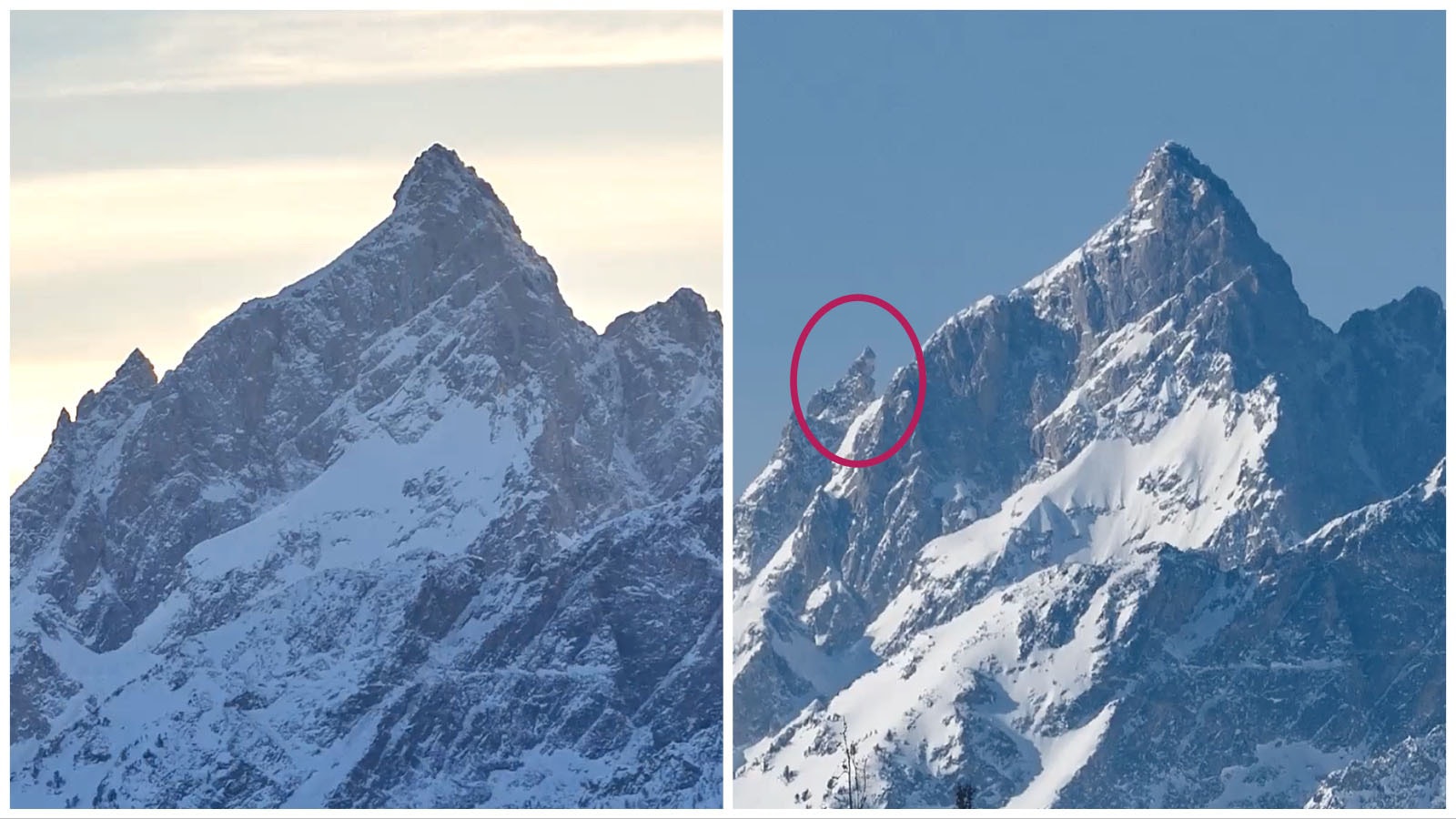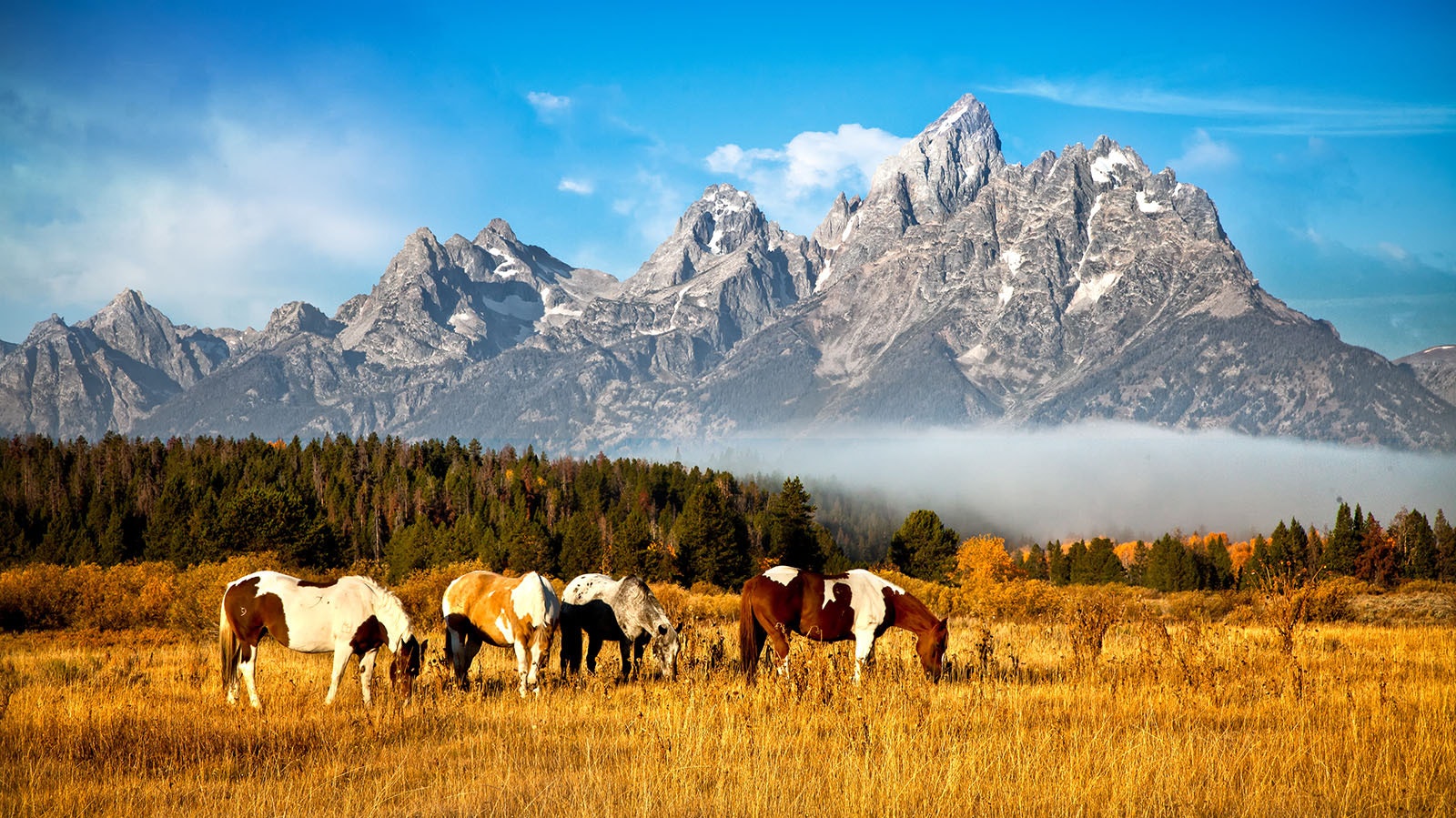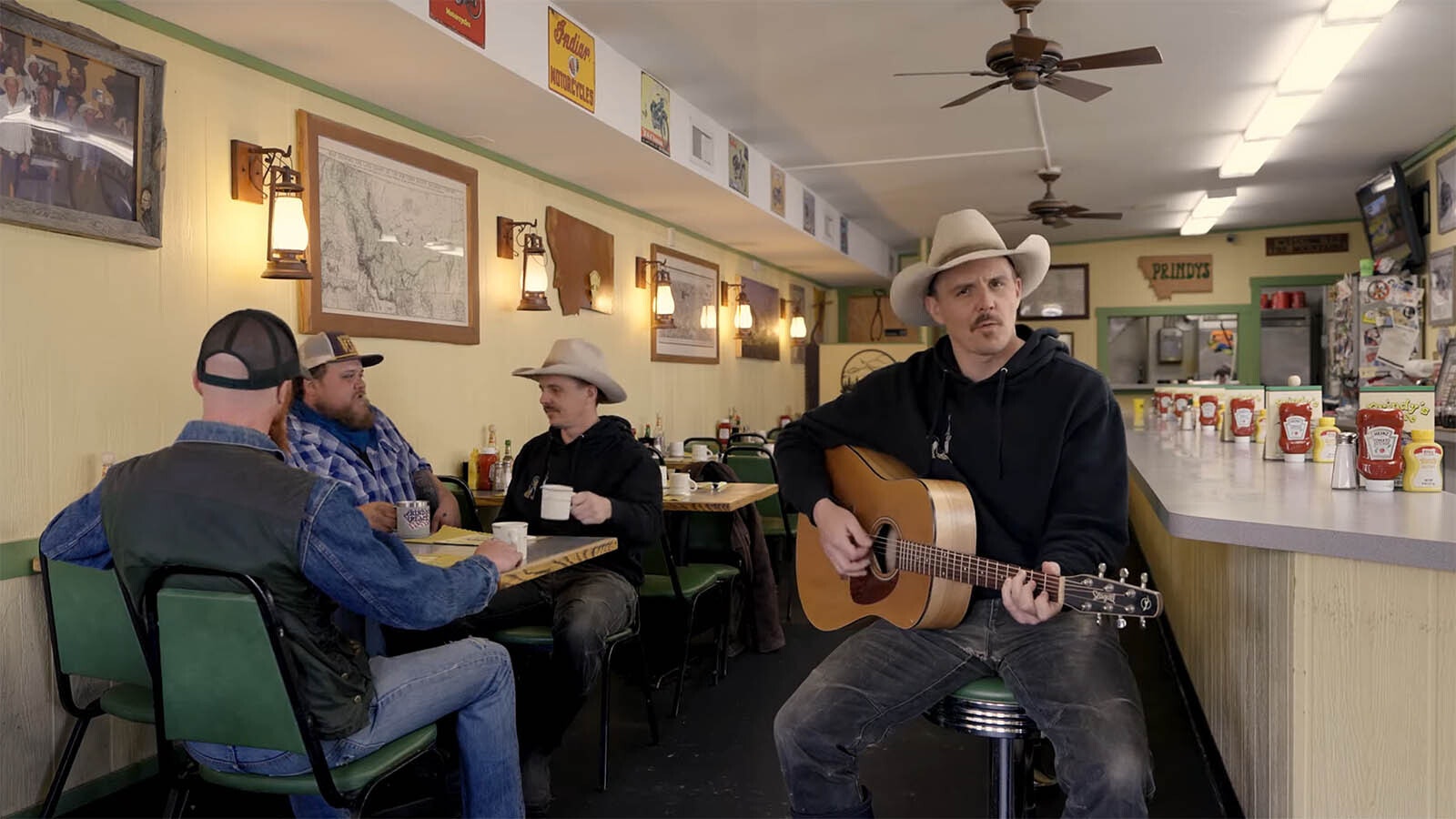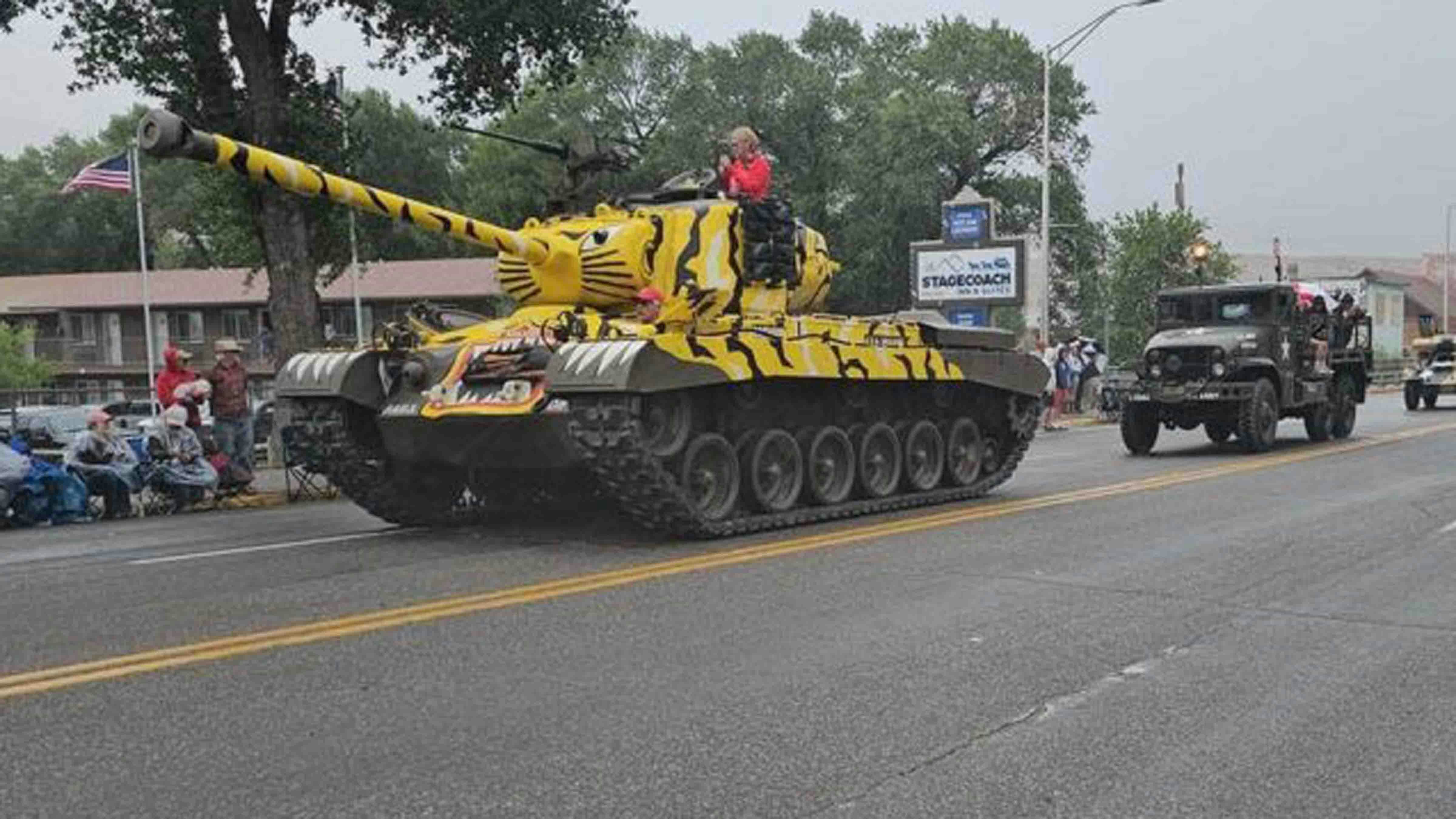Well, the Tetons broke.
The iconic Wyoming mountain range often referred to as having the appearance of shark teeth now has a snaggle tooth. Or, if sticking with the original French nomenclature, the Tetons got a boob job.
The instantly recognizable profile of the world-famous Teton range has been noticeably altered by a major rockslide on the Grand’s east ridge last fall. A large portion of what is known as the Second Tower simply fell away practically overnight.
The thing is, no one outside of the climbing community really noticed until now. As snow begins to melt off the mountain caps, the alteration is clearly evident to the naked eye from the valley floor.

Tetons: Young And Restless
Skirting the western edge of the valley early trappers referred to as Jackson’s Hole, la Trois Tetons was the name bestowed upon the range consisting of what is today dubbed the Cathedral Group — Grand Teton, Teewinot and Mount Owen.
To sexed-up French fur traders, the peaks reminded them of three breasts, rising majestically into a baby blue sky. From the Idaho side at a rendezvous spot known as Pierre’s Hole, the likeness is actually quite remarkable.
Grand Teton is the tallest point, topping out at 13,775 feet. Along its eastern ridge are two columns that spur off dramatically. The lower is Molar Tooth (12,320 feet). Above that is Second Tower at 12,960 feet. Head-on from the turnouts off U.S. Highway 89, the two features are not really noticeable.
To best see the new-look Second Tower, one has to be positioned slightly north at, say, the Mountain View Turnout off Teton Park Road.
A recent story highlighting the change in the skyline calls the alteration “forever changed” in nature. That’s not true, and that’s the whole point.
The Rock Of The Restless
The Tetons are forever changing.
The new-look Second Tower may not last a decade, or even a year. The rapid erosion — observing mountains move in our lifetime — is par for the course in the youngest part of the Rocky Mountains known as the Teton Range.
“Much of the Rocky Mountain Range is 60-70 million years old, where the Tetons is 10 million years old,” said Simeon Caskey, chief geologist at Grand Teton National Park. “You see the still very sharp, jagged peaks.
“The range remains active, and you continue to see mechanical failures, episodically, usually when there are offsetting events.”
Seismic activity has played a large role in creating and changing the landscape in the Tetons, and continues to do so.
Teton Fault, a 44-mile crack in the valley floor of Jackson Hole, has lain dormant for some 4,800 years but is still considered active and capable of producing 7.5 magnitude earthquakes.
Another contributing factor to what scientists refer to as “slope failures” is global warming. Or, at least the politically correct tag: climate change.
Glaciers are no doubt retreating in the Rocky Mountain Range — it’s observable — and the melt, along with more drastic freeze-thaw cycles, plays a huge role in the increased frequency of falling rocks.
“Mountain ranges are constantly evolving and changing. Rockfall is an aspect of it, especially with younger mountain ranges like the Tetons,” Caskey said. “While we don't have quantitative data to point at what is causing rockfall in the Teton Range, a number of things drive it beginning with long-range warming trends where permafrost or alpine ice that has formed a cohesive bond, melts and becomes destabilized. That is a trigger.”
Rocks themselves are constantly expanding and contracting with temperature shifts. The metamorphic and igneous boulders that make up the Tetons may be some of the oldest in North America at nearly 3 billion years old, but they are not impervious to cracking up now and then.
As temperatures warm, rocks expand and the space between them is reduced. Something’s gotta give.
Add increased rainfall events, lubricating weaknesses in and between rocks, and it is easy to see why rockfall activity might be on the rise, Caskey says.
“I don't think any of these, individually, are responsible for slope failures, but they often work in concert. It would be very difficult to tease apart without a definitive long-range study,” Caskey said.
Alps Are Also Crumbling
One such study conducted in Europe analyzed data points collected from 1990 through 2020. The conclusion is in the headline of the article published February 2021: “Pronounced increase in slope instability linked to global warming: A case study from the eastern European Alps.”
Lead author Sara Savi writes that, “In recent decades, slope instability in high-mountain regions has often been linked to increase in temperature and the associated permafrost degradation and/or the increase in frequency/intensity of rainstorm events.”
The study confirmed anecdotal evidence and concluded rockfalls have increased since the 2000s, and the occurrence of debris flows has increased since 2010.
Grand Teton, with its partners, is in the process of sifting through its own data collection, comparing and contrasting a 2014 high-resolution light detection and ranging (lidar) elevation data flyover with one done just last fall. These aerial imagery flights are scheduled for autumn when the least snow and ice is on the ground.
“The latest lidar will allow us to overlay images over an 8-year period to determine where we might have change, including loss, and calculate those volumes,” Caskey said.
Loss could mean ice sheets, glaciers and the like, as well as land mass movement and peak erosion.
Climbing Community Often Park’s Eyes and Ears
Caskey and company are aware of increased activity, including rockfalls and landslides, especially in the more highly trafficked areas of the range like the Cathedral Group, the tallest peaks representing the core of the Tetons.
But is that because more people than ever are out there with eyes on? Or is the Teton Range, as a whole, decaying more rapidly in recent years?
“We know from anecdotal observation, a lot of this activity has been in core of the range, in the Cathedral Group, which is the most visited,” Caskey said. “Over past several years, the park has become aware of various concerns or issues of rockfall. Many of these directly as a result of our concessions operators.
“Even though we have a crew of climbing rangers, the private mountain guides are out there in various locations, very frequently. We are typically informed almost immediately after an event,” Caskey said.
Some of these observations have included recent events like a substantial fracture in a rock hanging over the Hidden Falls area on the western shore of Jenny Lake. Climbers brought noticed the crack and brought it to the attention of park authorities in July 2018. Grand Teton closed the area for over a month out of safety concerns.
A large chunk of the rock ended up breaking off in early November of that year.
“Last year, as snow was melting above the headwall on approach to the Owen Spalding route of the Grand, that was causing some boulders and other material to loosen up. A concessional operator informed the park,” Caskey said. “We really rely on our partners to better understand changes occurring in real time.”
And sometimes the mountain gives no warning.
A 54-year-old Wisconsin man was buried by a rockslide in the South Fork of Garnet Canyon on Aug. 27, 2013. Rocks and debris came from the north aspect of Nez Perce Peak, west of the Hourglass Couloir and southeast of the Grand.
Two Exum guides were in the immediate area and managed to unbury and stabilize the man who was then short-hauled off the mountain.
Second Tower Collapse
The major slope failure that altered the appearance of the Second Tower happened sometime last September. It was likely several events rather than just one big break off.
At the high camp of Jackson Hole Mountain Guides, climbers were awakened by the crashing of rocks Sept. 6, 2022.
Exum Mountain guides reported hearing and seeing a large rockslide Sept. 11, 2022. Boulders and stones were noted hundreds of feet below scattered in the snow of Teepee and Teton glaciers on both sides of the ridge.
No one has been hurt in any of the rockslide events. Neither have routes to the Grand or overnight camps been substantially compromised — yet.
“It’s not unusual to hear falling rocks. I’ve been climbing the Tetons for 50 years and have seen a fair amount of rockfall from time to time,” said Exum guide Renny Jackson. “But that Second Tower event, I did not think I would see something like that in my lifetime.
“That is tons and tons of material. It probably lost half of its mass. What’s left there now looks somewhat precarious for sure.”
Jackson added that the slides likely altered five to seven climbing routes, though most summit the Grand from the opposite (west) side.
Caskey said recreational climbers who traverse the east ridge will “undoubtedly” have to adjust their climbing routes.
“Half the feature has fallen off,” he said.
Overnight camp areas have not been affected, Caskey said, though the park is keeping a close eye on that.
“Typically, camp zones are not in depositional zones,” he said.
Jake Nichols can be reached at: Jake@CowboyStateDaily.com





